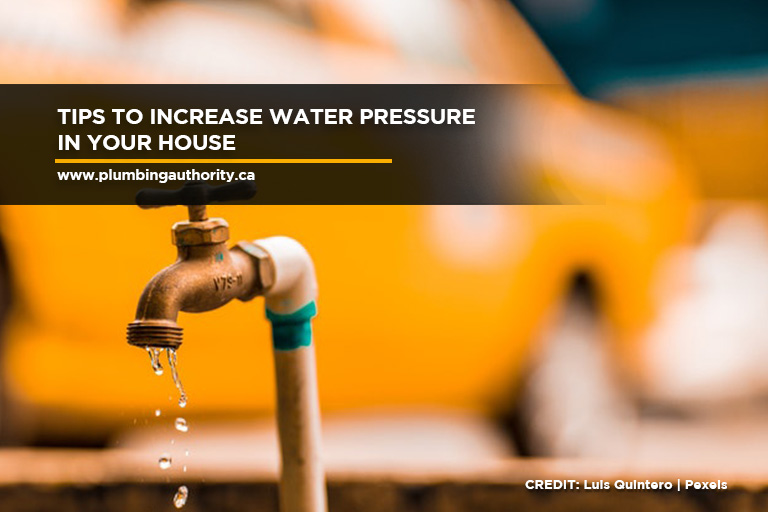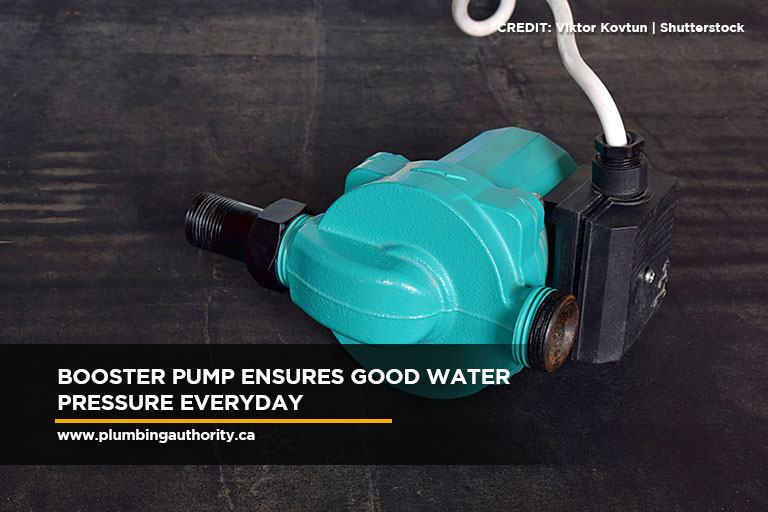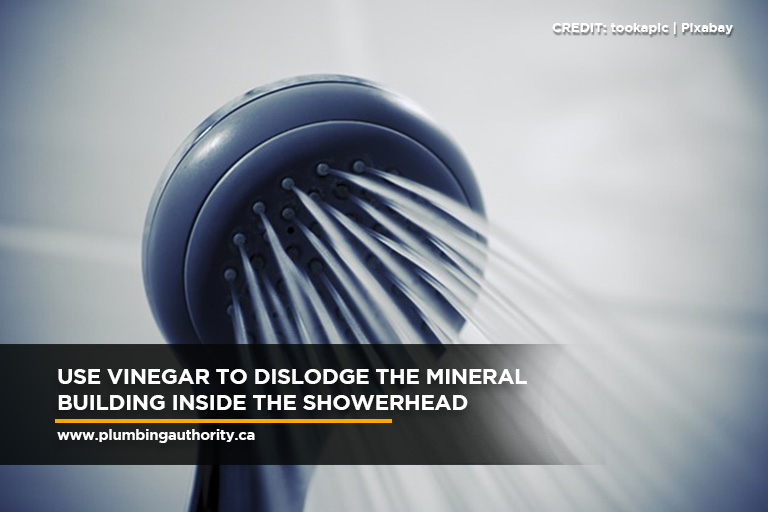
Low water pressure can cause discomfort in your home, including weak showers, poor toilet flushes, and the inability to use multiple home appliances simultaneously. The ideal residential water pressure is between 45 to 55 pounds per square inch (psi), but most water pressure in homes is in the range of 45 to 80 psi. When the reading is below 40 psi, it means that the water pressure in the house is low.
Diagnosing Low Water Pressure
Before we get into the solutions on how to increase home water pressure, we will first look into several reasons behind the loss of water pressure in your home.
- Too Much Demand on Water
Sometimes, using multiple plumbing fixtures at the same time can increase the demand to maintain the water pressure in each fixture. - Faulty Fixtures
Faucets, showerheads, and other fixtures can eventually become faulty or clogged. You only need to clean out the aerator to remove the clog; otherwise, you need to replace the entire faucet or showerhead if the problem is not resolved. - Broken Pressure Regulator
A water pressure regulator helps stabilize and maintain the right water pressure in your home within a certain range. When the regulator becomes defective, it can result in low or high water pressure. - Closed Valves
There are 2 different valves used to shut off the water supply in your home. Both of these valves should be fully opened to ensure that you have a good water pressure throughout your home. - Clogged Pipes
A blockage can affect the water flow through the pipes. Disrupted water flow can cause the water pressure to go down. To restore proper water flow, make sure to clean or replace the faulty pipe to address the issue. - Corroded Plumbing
Cleaning out the corroded area or replacing the small sections of piping can help fix the problem. However, the entire piping system can eventually become corroded, which impacts the overall performance of your plumbing system and water pressure.
Techniques to Boost Water Pressure
- Increase Water Pressure Without a Pump
Many residential owners use a pressure booster pump to address low water pressure problems. However, you can fix this issue without using a pump simply by troubleshooting. The cause of the problem might be a minute issue with the shutoff valves. Find the water meter to check if the valves are fully opened.
At other times, simple installation problems or valve adjustments can cause water pressure issues. Troubleshooting what caused the problem before calling a plumber can help you save money.
Do you have pipes replaced recently or did you just move into a new home? Clogged pipes are unlikely the cause of low pressure in these scenarios. A newly installed plumbing system narrows the potential factors that are causing the low water pressure. If this is the case, simply follow this:
-
- Look for the the water meter
- Find the shut off valves
- Be sure that they are fully open
When the valve is not fully open, it could cause a significant change in water pressure and flow level. Make sure to open them fully.
On the other hand, if the valve looks well-installed and is fully open, this may indicate a serious problem. You may need to leave the job to a pro for a thorough inspection and repair.
- Increase Water Pressure with a Booster Pump

Sometimes, the demand of water supply in the entire city or town can affect the water pressure. High demand can result in water pressure lower than 40 psi. In this case, installing a water pressure booster pump can help improve the water pressure in your home.
The booster pump works by taking in the water and using an electric pump and water pressure tank to upsurge the psi. You can use the top dial of the device to adjust the pressure to your liking.
The booster pump requires installing a ¾ inch plastic or copper water main in the house. The system uses compressed air to create pressure to the flowing water supply and feed it into your home. The process of installing a booster pump to your water main is simple:
-
- `Attach the main water line that goes into the house to the booster pump
- Attach the pump output to the water pressure tank
- Attach the tank output to the house pipes
While a booster pump helps eliminate the problem of low water pressure effectively, this option can be expensive. However, it ensures that the household members can use multiple water-based appliances at the same time without worrying about water pressure. It allows you and your family to run the laundry, take a hot shower and wash the dishes all at once.
- Improve Water Pressure in Your Pipes
Hidden leaks can also trigger low pressure in your piping system. Not only will it cause inconvenience, but it can also cause a drastic increase in your water bill. If left unresolved, you could end up paying more for less water.
There are several ways you can check for leaks in your home. Among the most common appliances that are prone to leaks, include:
-
- Toilets
- Sink faucets or under-sink pipes
- Shower faucets
- Dishwashers
- Washing machines
Here are some of the telltale signs to look out for:
-
- Water spots/stains on walls, flooring, or ceiling
- Pooling water near pipes
- A spike in your water bill
- The food colouring test
If you suspect an internal toilet leak, use a food colouring test to confirm the problem. It only requires a tube of food colouring.
-
- Open the toilet tank
- Drop food colouring into the tank water
- Leave the toilet for an hour or two
- Check the bowl and observe if the colour has leaked into the water
- Boost Water Pressure in Tap or Shower

Does low water pressure only happen on one side of the house? Does your sink tap work fine but your showerhead has weak water pressure? The problem can be caused by the buildup of sediment in the pipes.
Luckily, this problem can be easily resolved. Over time, debris and minerals will build up in the pipes, causing a blockage in the pipe and faucet. To help you fix the blockage and increase water pressure in your shower or faucet, you only need the following:
-
- White vinegar
- A plastic bag
- A rubber band
Here’s what to do:
- Fill the plastic bag with white vinegar and place the showerhead or faucet inside. Use the rubberband to seal the bag. Soak it for a few hours to allow the acid to eat away the debris or minerals that have caused the blockage.
- Check if the vinegar has disintegrated the blockage and rinse it well.
For complex plumbing fixture replacements, repairs, and installation, get in touch with a professional plumber in Caledon. Call Plumbing Authority Inc. today at 647-992-PIPE (7473) for a free on-site estimate. You can also fill out our contact form to send us your message or queries.




